Disclosure: This article contains affiliate links. We may earn a commission from purchases at no extra cost to you, which helps our travel content.
The moment you step into Malacca's labyrinthine markets, time seems to fold in on itself. Colonial Portuguese influences mingle with Chinese heritage, Malay traditions, and Dutch architectural remnants—all creating a sensory tapestry unlike anywhere else in Southeast Asia. As an anthropologist who has spent decades studying material culture in valley communities worldwide, I find Malacca's markets to be living museums where history, craftsmanship, and commerce converge in the most delightful ways.
Jonker Street: Beyond the Tourist Facade
While Jonker Street (Jalan Hang Jebat) appears on every tourist itinerary, there's a profound difference between casually browsing and understanding the cultural significance behind what you're seeing. During my recent research visit, I spent three consecutive evenings at the Jonker Walk Night Market, arriving progressively earlier each time (5:30 PM is ideal) to observe how the market transforms from local commerce to tourist spectacle.
Beneath the surface of seemingly ordinary trinkets lies a fascinating narrative of cultural exchange. The antique shops tucked between cafes hold Peranakan artifacts that speak to the Straits Chinese heritage—delicate porcelain with motifs that blend Chinese symbolism with Malay aesthetic sensibilities. I was particularly drawn to the handcrafted beaded slippers (kasut manek) that require weeks of meticulous work, with patterns reflecting both Chinese prosperity symbols and European floral designs.
During my exploration, I found myself constantly documenting textile patterns and craftsmanship techniques in my waterproof notebook. Its durability proved essential in Malacca's unpredictable tropical climate, especially when afternoon showers caught me mid-documentation.
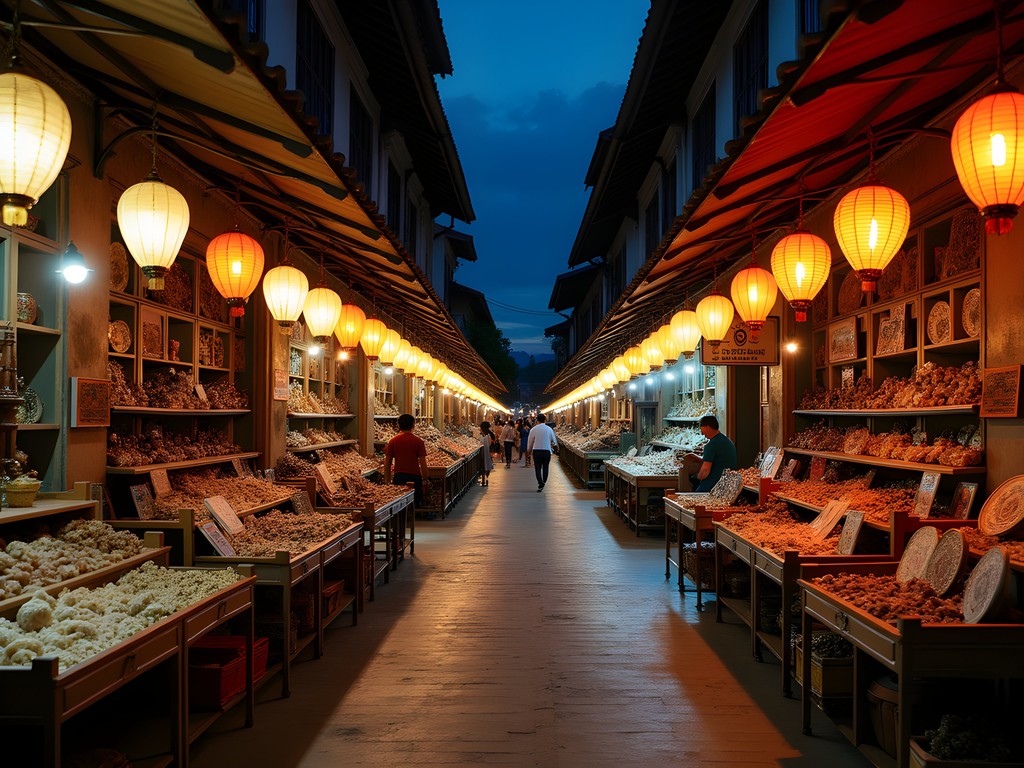
💡 Pro Tips
- Visit Jonker Street Night Market on Friday, Saturday, and Sunday evenings, but arrive by 5:30 PM before crowds peak
- Look for shops with elderly craftspeople actively working—they often create the most authentic pieces
- Bargaining is expected but approach it as a respectful conversation rather than aggressive haggling
Textile Treasures: Batik, Songket, and Contemporary Adaptations
My anthropological research has long focused on textile traditions, and Malacca offers a fascinating window into how these crafts evolve while maintaining cultural integrity. Rather than limiting your textile exploration to tourist shops, I recommend visiting the smaller workshops where artisans still practice traditional methods.
On Heeren Street (Jalan Tun Tan Cheng Lock), I discovered a small family-run batik studio where three generations work together—the grandmother hand-drawing the most intricate wax patterns, the mother managing the dyeing process, and the daughter incorporating contemporary designs that appeal to younger customers. The cultural transmission happening in these spaces is precisely what keeps traditional crafts relevant.
For those interested in Malaysian textile traditions, I suggest visiting the Malacca Textile Museum first to understand the historical context before shopping. The knowledge gained there will transform your purchasing experience from mere souvenir-hunting to meaningful cultural appreciation.
During my visits to textile workshops, I've found my compact light meter invaluable for properly documenting the subtle color variations and intricate patterns of these textiles. The ability to measure both ambient and reflected light ensures I capture the true brilliance of these fabrics in my research photography.
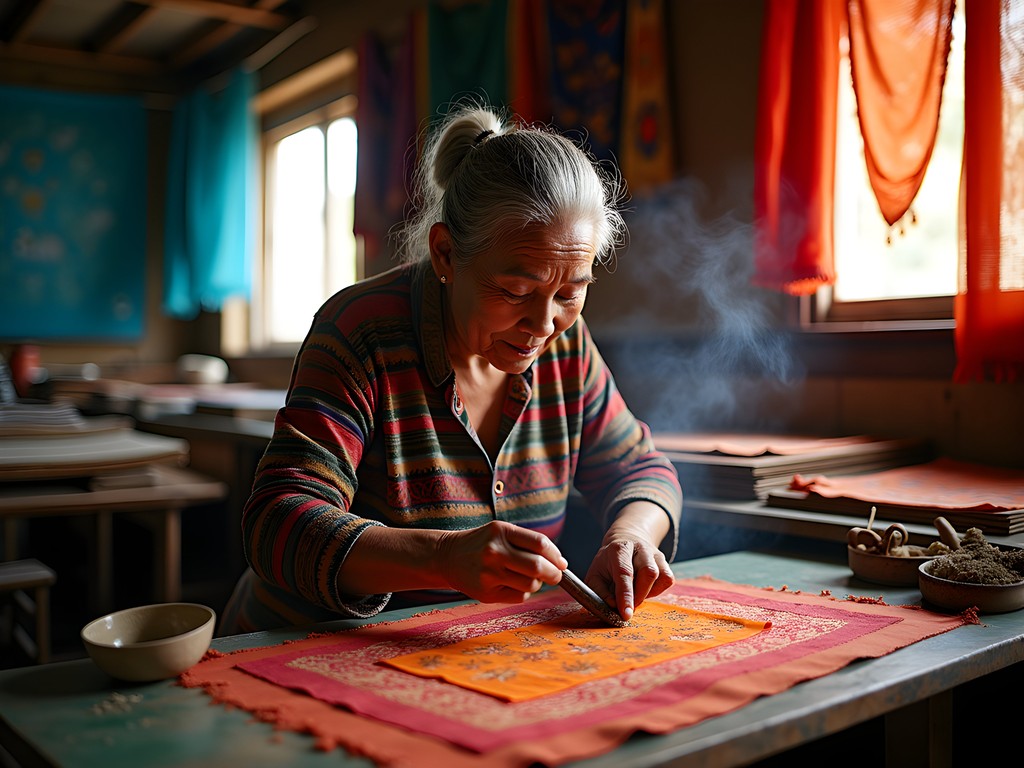
💡 Pro Tips
- Ask permission before photographing artisans at work—offering to purchase something or make a small donation is a respectful gesture
- Look for natural dyes in batik pieces—they create more subtle, complex colors than synthetic alternatives
- Quality songket (gold-threaded) textiles should have consistent thread tension throughout the piece
Peranakan Treasures: Cultural Fusion in Material Form
The Peranakan culture—born from the intermarriage of Chinese merchants and local Malay women—produced one of Southeast Asia's most distinctive material cultures. In Malacca, this heritage manifests in exquisite beadwork, intricate embroidery, and the iconic nyonya porcelain that blends Chinese techniques with local motifs.
Rather than purchasing from larger antique dealers, I seek out the smaller family shops along Jalan Tokong and Jalan Tukang Emas where knowledge is passed through generations. During my recent visit, I spent a fascinating afternoon with Madam Lim, a third-generation Peranakan antique dealer whose tiny shop contains treasures she can trace to specific families and historical events.
The most authentic Peranakan pieces often show signs of actual use—slight wear on porcelain where hands have held it for decades, or the subtle fading of beadwork that indicates natural dyes rather than modern synthetic ones. These 'imperfections' actually authenticate the piece's cultural significance.
When examining intricate Peranakan beadwork and embroidery, my illuminated magnifier has proven invaluable. The LED illumination reveals subtle details in craftsmanship that might otherwise go unnoticed, particularly in the dimly lit traditional shops where these treasures are often found.
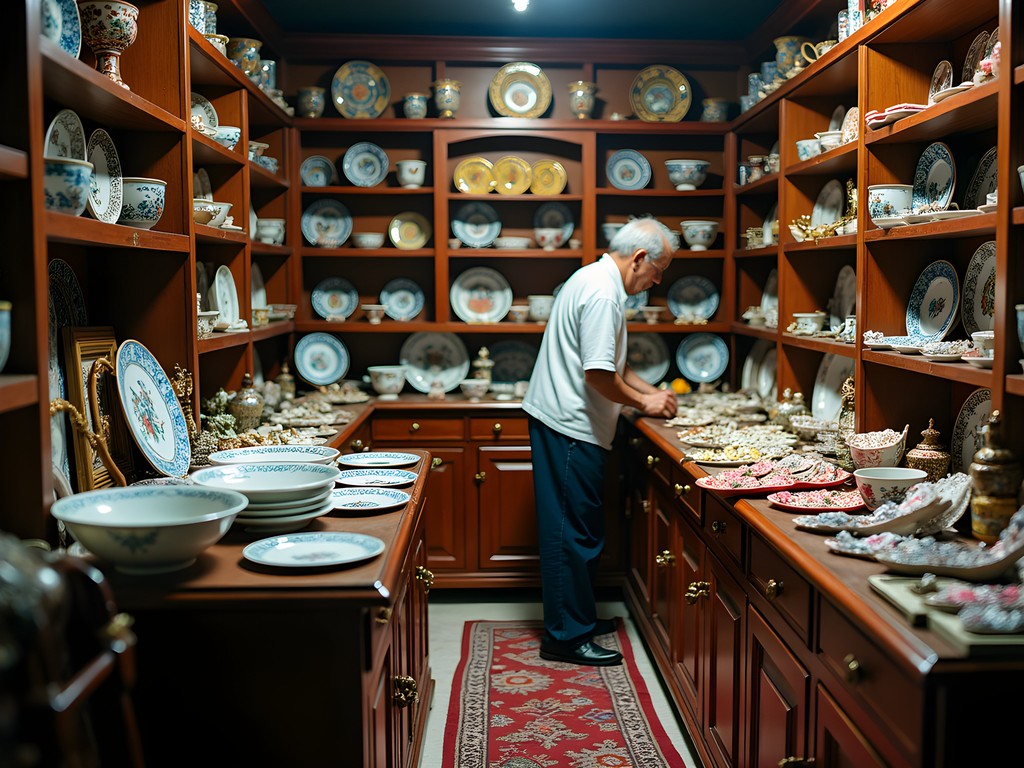
💡 Pro Tips
- Authentic Peranakan antiques will have provenance stories—ask the seller about the piece's history
- Beaded slippers (kasut manek) should have even stitching and secure beading throughout
- Look for Peranakan porcelain with hand-painted rather than stamped designs—the slight irregularities indicate authentic craftsmanship
Beyond Jonker: Malacca's Hidden Market Gems
While most tourists confine their shopping to Jonker Street, my anthropological curiosity has led me to Malacca's peripheral markets where authentic local commerce thrives. The Pasar Besar Melaka (Central Market) on Jalan Pasar offers a genuine glimpse into everyday Malaccan life, with vendors selling everything from local produce to handcrafted kitchen implements that reflect traditional cooking practices.
For those interested in contemporary Malaysian craftsmanship, the small collective workshops around Jalan Bunga Raya showcase how younger artisans are reinterpreting traditional techniques. I was particularly impressed by a cooperative of women artisans creating modern accessories using traditional batik and songket techniques—their tote bags and laptop cases represent cultural adaptation rather than simple commercialization.
During my market explorations, I rely on my crossbody anti-theft bag which allows me to navigate crowded spaces while keeping my research materials, camera, and purchases secure. The lockable compartments and slash-resistant construction provide peace of mind without sacrificing the casual, approachable appearance that helps me blend in with local shoppers.
Perhaps my favorite discovery was a small spice market near Kampung Morten where I found a vendor selling hand-ground spice mixtures based on family recipes. The complex aroma profiles of these spices tell the story of Malacca's position at the crossroads of ancient trade routes more eloquently than any museum exhibit.
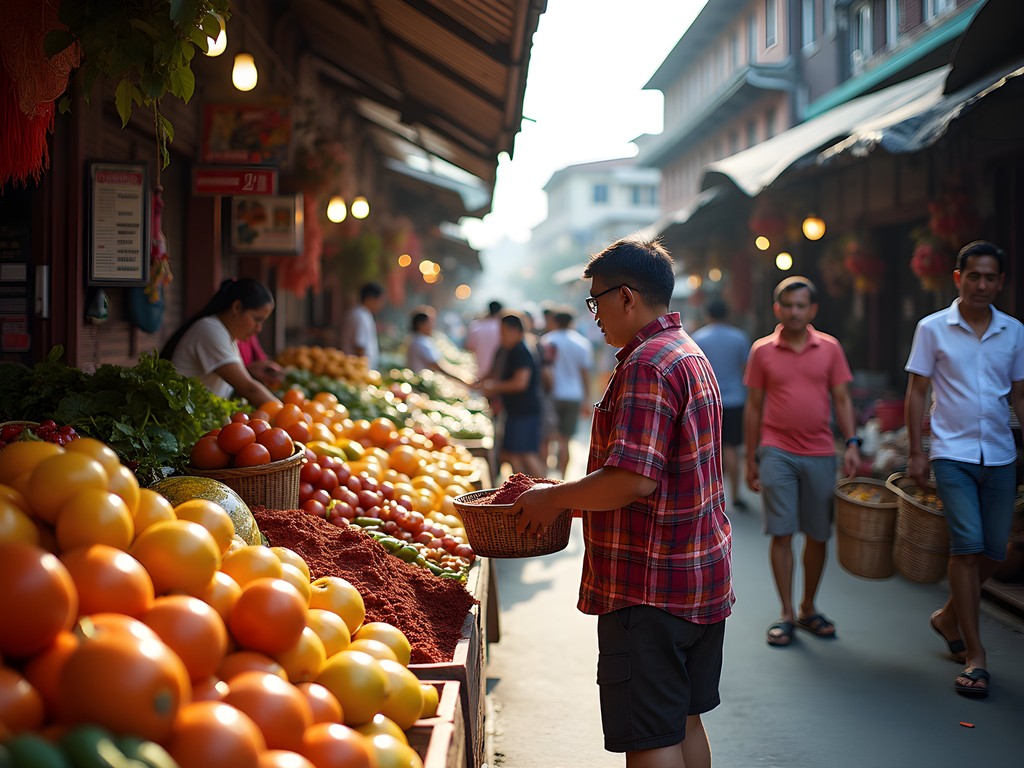
💡 Pro Tips
- Visit local markets early (6-8 AM) to observe authentic community interactions before tourist hours
- Bring small denominations of Malaysian Ringgit for easier transactions in local markets
- Learn a few basic Malay phrases—even simple greetings will transform your shopping experience
Ethical Shopping: Supporting Sustainable Craft Traditions
As both an anthropologist and a conscious consumer, I'm acutely aware of how tourism impacts traditional craft communities. In Malacca, the pressure to produce quick, cheap souvenirs threatens the integrity of craft traditions that have survived centuries. Yet there are numerous opportunities to shop ethically while supporting cultural preservation.
One exemplary initiative is the Craft Heritage Center near Stadthuys, where a collective of artisans works with fair trade principles. Here, the slightly higher prices directly support sustainable production methods and fair compensation for skilled craftspeople. Each item comes with documentation about the artisan and the cultural significance of the techniques used—precisely the kind of transparency that ethical shopping requires.
During my visits to craft workshops, I've found my portable luggage scale indispensable. It allows me to confidently purchase handcrafted textiles, ceramics, and wooden artifacts without worrying about exceeding airline weight restrictions on my return journey. The compact design takes minimal space in my daypack but saves considerable stress when packing my treasured finds.
I also recommend seeking out workshops that offer hands-on experiences. During my recent visit, I participated in a traditional batik-making session at the Orang Asli Craft Center, where indigenous artisans teach visitors basic techniques. This direct engagement creates meaningful cultural exchange while providing artisans with income that doesn't require mass production of their cultural heritage.
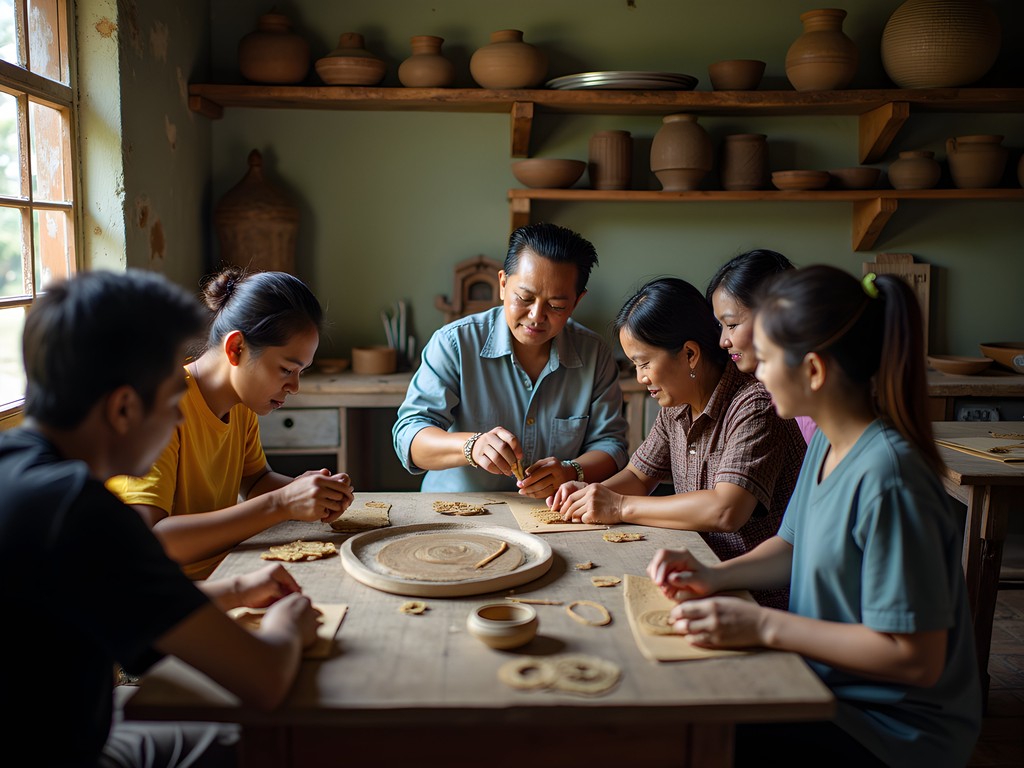
💡 Pro Tips
- Look for items with artisan signatures or workshop marks—these indicate authentic, non-mass-produced crafts
- Ask about materials—sustainable crafts will use locally-sourced, natural materials rather than imported synthetics
- Be willing to pay appropriately for quality—extremely low prices often indicate exploitative labor practices
Final Thoughts
Malacca's markets offer far more than shopping opportunities—they provide windows into a complex cultural tapestry woven over centuries of trade, colonization, and cultural exchange. As you explore these vibrant spaces, remember that each purchase can either support or undermine the authentic craft traditions that make this UNESCO World Heritage city so distinctive.
I encourage you to shop not just with your eyes, but with cultural curiosity and ethical awareness. Ask questions about techniques and materials. Learn the stories behind the objects. Create connections with the artisans whose hands keep cultural knowledge alive.
My anthropological research has consistently shown that traditional crafts survive not when they're frozen in time as museum pieces, but when they find relevance in contemporary life while maintaining their cultural integrity. As visitors to Malacca, we can participate in this delicate balance—supporting authentic craft traditions while respecting their evolution in response to changing circumstances.
The treasures you bring home from Malacca's markets can be more than souvenirs; they can be tangible connections to centuries of human creativity and cultural exchange. Shop mindfully, and these objects will continue to tell their stories long after your journey ends.
✨ Key Takeaways
- Look beyond Jonker Street to discover authentic local markets and craft workshops
- Learn about traditional techniques before shopping to make more informed purchases
- Support sustainable craft initiatives that provide fair compensation to skilled artisans
- Engage directly with craftspeople through workshops and demonstrations when possible
- Consider the cultural significance and provenance of items rather than focusing solely on price
📋 Practical Information
Best Time to Visit
year-round, though January-February (Chinese New Year) offers special cultural markets
Budget Estimate
$50-150 USD per day for mid-range shopping and experiences
Recommended Duration
2-3 days minimum to explore markets thoroughly
Difficulty Level
Beginner
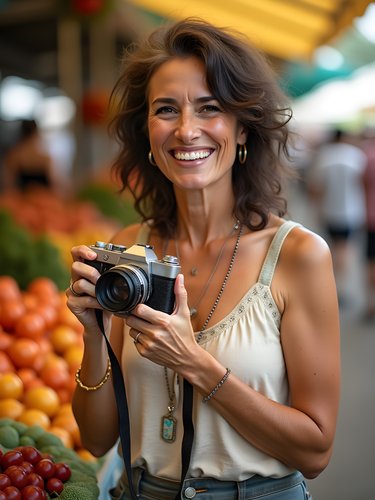
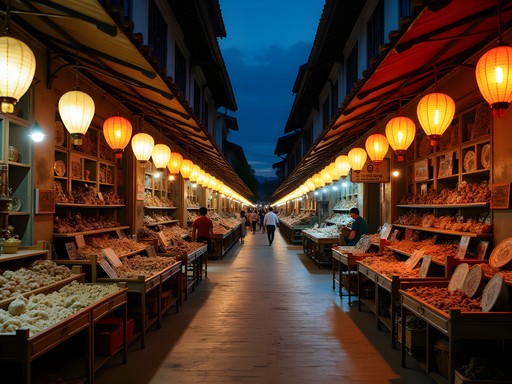
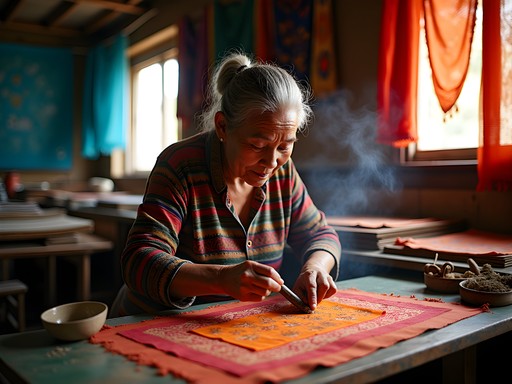
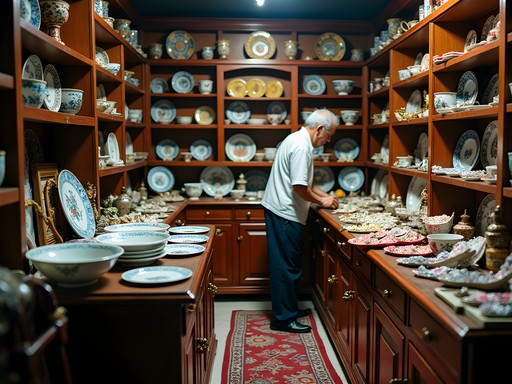
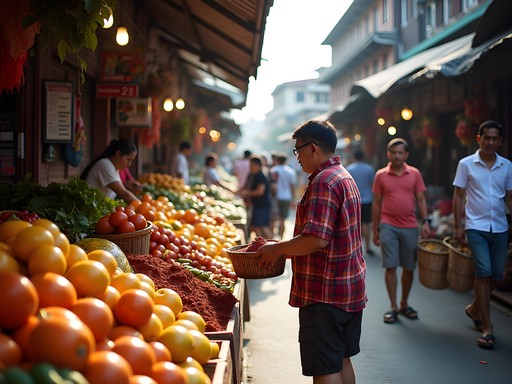
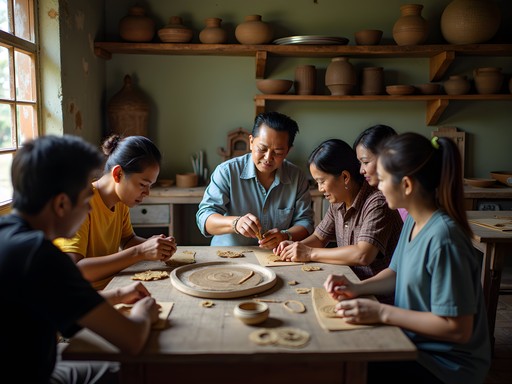





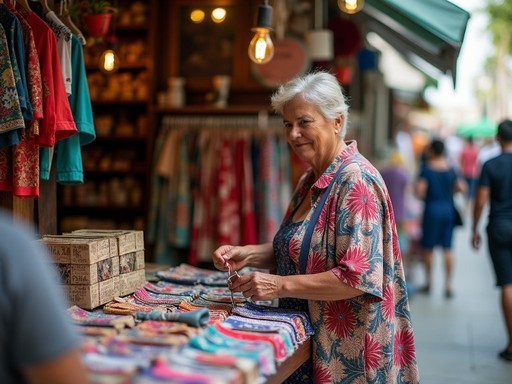
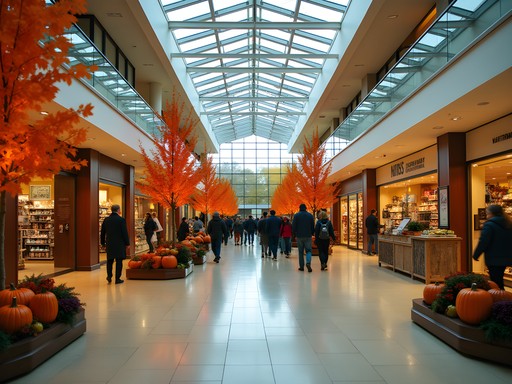

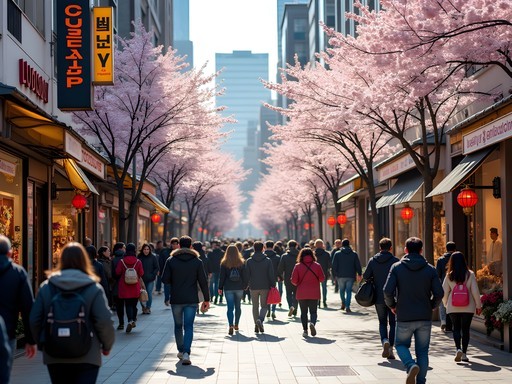
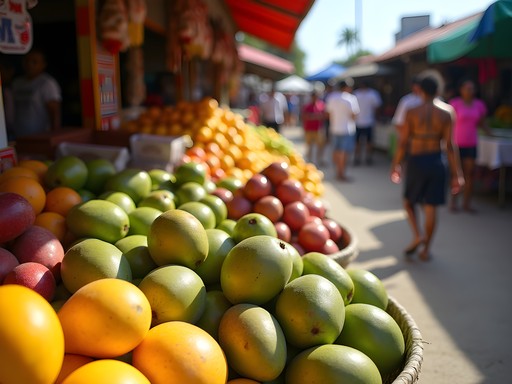
Comments
skyvibes7707
OMG I'm going to Malacca next week and this post couldn't have come at a better time!!! So excited to check out all these markets! Definitely saving this post! Anyone have recommendations for must-buy souvenirs that aren't too bulky for carry-on luggage??
roamclimber
The miniature Peranakan tiles make great souvenirs - colorful, flat, and they really capture the local aesthetic. Also, the handmade soaps with local ingredients pack well!
Willow Sanchez
Samantha, your section on Peranakan treasures took me right back to my time in Malacca! I stayed with a Nyonya family through a homestay program, and the grandmother showed me her collection of antique jewelry and kebayas that had been passed down for generations. The stories behind each piece were as valuable as the items themselves. For anyone visiting, I highly recommend the small museum near Heeren Street that showcases Peranakan household items - it provides such important context before shopping for these cultural pieces. Also, don't miss the morning market at Pasar Besar Melaka for the most authentic local experience away from tourist crowds!
coffeeace1948
Love Malacca! Bought a beautiful batik shirt there 15 years ago that I still wear!
Frank Garcia
I've visited Malacca three times now, and each time I discover something new in the markets. What this post really captures well is how the markets reflect the multicultural history of the city. Beyond the obvious souvenirs, it's worth looking for the local food products - I found some incredible Nyonya spice mixes that transformed my home cooking. The antique shops tucked away on the side streets off Jonker are also gold mines if you're patient. I documented my finds in my travel journal which has been perfect for noting shop locations and prices for haggling references.
hikingbuddy
Planning my first trip to Malacca next month. Are the markets open every day or are there specific market days I should aim for?
Samantha Hughes
Jonker Street Night Market only runs Friday to Sunday, and that's when it's most lively! But most shops are open daily. Just note many traditional shops close on Mondays. Hope you have a fantastic trip!
hikingbuddy
Thanks so much for the info! Will definitely plan around the weekend then.
travelace
Great post! The textile section brought back so many memories.
roamclimber
Just got back from Malacca last month and this post is spot on! The markets are incredible. I found this tiny shop off Jonker Street that sold handmade Peranakan beaded slippers - the craftsmanship was amazing. Spent way too much on batik fabrics too, but zero regrets. Pro tip: go early on weekdays to avoid crowds and get better prices when haggling!
Willow Sanchez
Those beaded slippers are such treasures! Did you happen to visit that little workshop where they demonstrate the beading process? I spent hours there watching the artisans work. It's amazing how they maintain these traditions.
roamclimber
I missed the workshop! Definitely putting that on my list for next time. The lady at the shop did explain some of the symbolism in the bead patterns though - fascinating stuff.
Frank Garcia
Solid write-up, Samantha. I'd add that bargaining etiquette in Malacca differs slightly from other Southeast Asian markets. Start at about 60-70% of asking price rather than the typical 50%. Merchants there seem to appreciate a more reasonable opening offer. Also, the morning markets (6-9am) near the river have the best food ingredients and almost zero tourists. Great place to observe local life and pick up unusual spices that you won't find elsewhere. The dried nutmeg with its red mace intact is particularly unique to the region.
wildninja
That bargaining tip is spot on! I noticed the same thing - merchants seemed offended when I tried the aggressive bargaining that works in Bangkok or Hanoi.
tripclimber
LOVE THIS POST SO MUCH!!! 😍😍😍 The photos of the textiles are incredible! Can't wait to visit in December and buy ALL THE THINGS!
wildninja
The Peranakan treasures section really resonated with me. I visited Malacca last year and became obsessed with the beaded shoes (kasut manek). Ended up taking a half-day workshop with a local artisan who taught me basic beading techniques. It's incredibly intricate work! The best shops are actually in the residential areas just beyond the main tourist zone. Look for houses with small workshop signs - that's where the real craftspeople are. Much better quality than the mass-produced stuff on Jonker, though definitely pricier.
tripclimber
OMG those beaded shoes are GORGEOUS! Do you remember the name of the workshop? I'd love to try that!
wildninja
It was called 'Nyonya Beading Heritage' - small place run by a family. You need to book ahead through their Facebook page. Totally worth the 80 ringgit for a 3-hour session!
Venture X
Premium card with 2X miles, $300 travel credit, Priority Pass